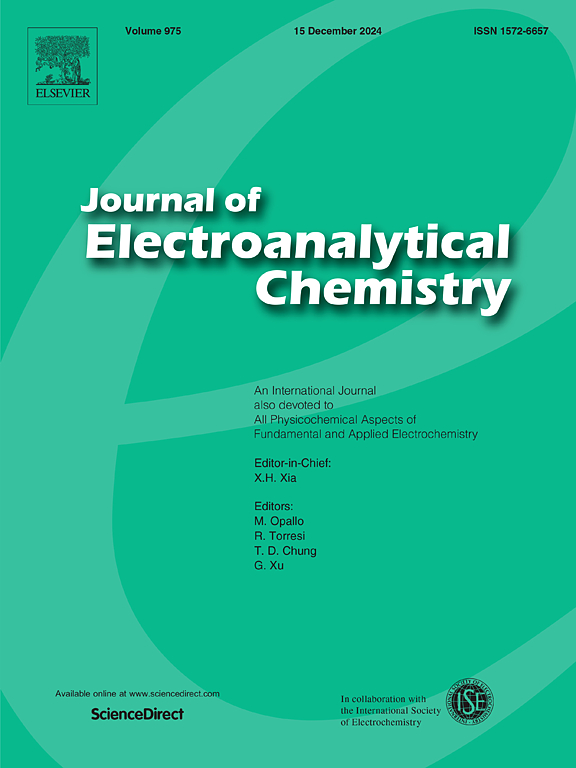利用 1-(4-羧基苯基)-5-巯基-1H-四氮唑添加剂评估微孔表面薄铜填充的镀铜工艺
IF 4.1
3区 化学
Q1 CHEMISTRY, ANALYTICAL
引用次数: 0
摘要
研究了在酸性电镀铜过程中,1-(4-羧基苯基)-5-巯基-1 h-四唑(CMHT)作为一种新型匀染剂对微盲孔过度填充的影响。通过计时器、循环伏安法和电化学阻抗谱证实了 CMHT 与其他添加剂之间的协同效应。结果表明,CMHT 与抑制剂(环氧丙烷 (PO)-环氧乙烷 (EO) -环氧丙烷 (PO),命名为 PEP)之间存在依赖对流的相互作用。金相切片测试表明,CMHT 不仅具有优异的微孔填充性能,而且在 2 A/dm2 的电沉积 60 分钟后,对于直径为 150 微米、深度为 80 微米的微盲孔,Cu 表面厚度仅为 19.1 微米。量子化学计算实验还表明,苯环和四氮唑杂环的 CMHT 平行取向可提高有效吸附面积。电化学测试结果与量子化学计算结果相当吻合。本文章由计算机程序翻译,如有差异,请以英文原文为准。
Evaluating copper plating process for filling micro vias with thin surface Cu by the 1-(4-carboxyphenyl)-5-mercapto-1H-tetrazole additive
The 1-(4-carboxyphenyl)-5-mercapto-1 h-tetrazole (CMHT) as a novel leveler for the overfilling of micro-blind vias was investigated in acidic copper electroplating. The synergistic effect between CMHT and other additives were confirmed through chronoamperometry, cyclic voltammetry and electrochemical impedance spectroscopy. The results showed a convection-dependent interaction between the CMHT and suppressor (propyleneoxide (PO)-ethylene oxide (EO)-propylene oxide (PO), named PEP). Metallographic section testing demonstrated that the CMHT not only have excellent microvia filling performances, but also only have 19.1 μm thin surface Cu for micro blind vias with a diameter of 150 µm and a depth of 80 µm by the electrodepositing 60 min of 2 A/dm2. The quantum chemical calculations experiments revealed also that the CMHT parallel orientation of the benzene ring and tetrazole heterocycle can enhance the effective adsorption area. The obtained results from electrochemical test and quantum chemical calculations were in reasonably good agreement.
求助全文
通过发布文献求助,成功后即可免费获取论文全文。
去求助
来源期刊
CiteScore
7.80
自引率
6.70%
发文量
912
审稿时长
2.4 months
期刊介绍:
The Journal of Electroanalytical Chemistry is the foremost international journal devoted to the interdisciplinary subject of electrochemistry in all its aspects, theoretical as well as applied.
Electrochemistry is a wide ranging area that is in a state of continuous evolution. Rather than compiling a long list of topics covered by the Journal, the editors would like to draw particular attention to the key issues of novelty, topicality and quality. Papers should present new and interesting electrochemical science in a way that is accessible to the reader. The presentation and discussion should be at a level that is consistent with the international status of the Journal. Reports describing the application of well-established techniques to problems that are essentially technical will not be accepted. Similarly, papers that report observations but fail to provide adequate interpretation will be rejected by the Editors. Papers dealing with technical electrochemistry should be submitted to other specialist journals unless the authors can show that their work provides substantially new insights into electrochemical processes.

 求助内容:
求助内容: 应助结果提醒方式:
应助结果提醒方式:


